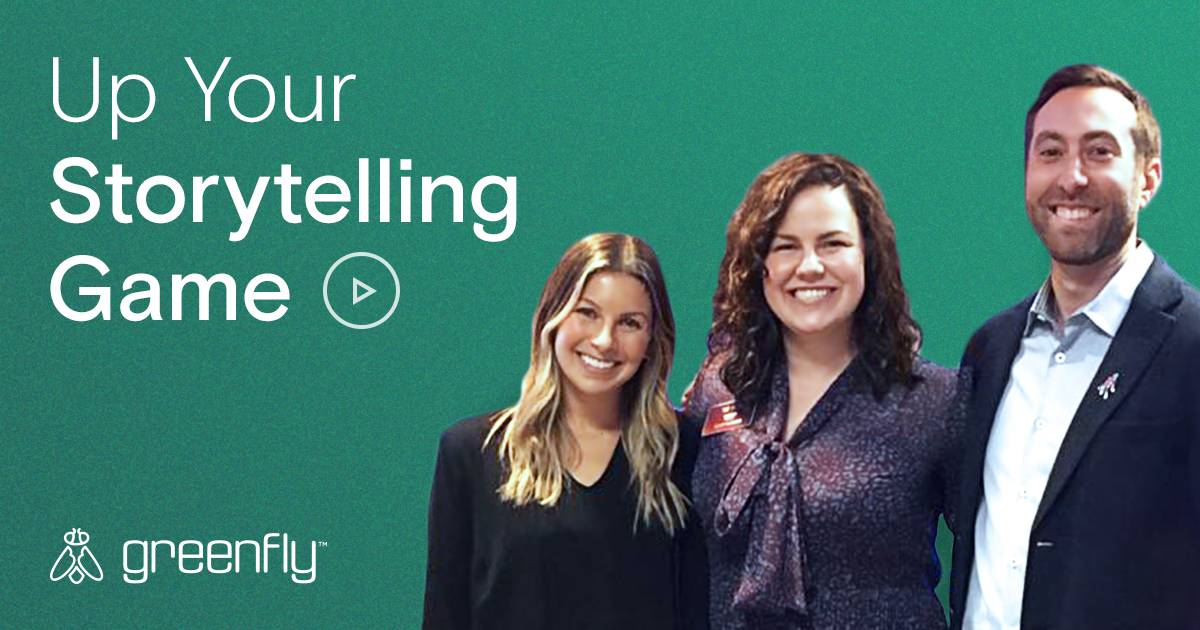How can brands unlock their potential social reach?
The answer starts with the people that know them best: their network of advocates, influencers and insiders.
That was one of the lessons gleaned during Greenfly’s recent WORLDZ Summit Master Course. The session delved into this topic of marshaling your brand’s community to up your storytelling game on social media.
Sleep Number’s Associate Director of Content Marketing Strategy, Sarah Panus, joined Greenfly’s Director of Customer Success, Ali Samson, and Director of Sales, Peter Berman, for a lively discussion in front of a packed audience.
The trio of speakers delved into real-world examples of brands doing it right. They also imparted tips for activating a community, and five key trends that marketers should be exploring for future social storytelling success.
Check out our full session update or watch our video recap below for all the insights.
Activating Your Community
Panus, who oversees editorial and influencer marketing functions at the billion-dollar sleep innovation company, focuses on storytelling. She shared that through stories, the company aims to educate people on the importance of sleep and why they should prioritize it for optimal wellness.
Panus offered some strategies for activating the right people to create and share your brand stories:
Start with the pillars of stories you want to tell.
Determine the types of stories that make sense for your brand.
Map out the voices to tell those stories.
Align with the voices that can best express those stories, including those that stem from partnerships.
Lean into insights.
Analyze quantitative and qualitative data from multiple sources—both paid and unpaid. This variety provides insights for continual improvement.
As Berman highlighted, mobile technology can help brands activate anyone in your community to create and share content, and drive success on social. The time is right for this, as illuminated by recent GlobalWebIndex research that he shared. The report found that while 38% of worldwide internet users on social follow brand accounts, there is a big opportunity for brand advocates to extend social audience reach. 51% follow people they know in real life, 33% follow actors, and nearly 1 in 4 people follow sports stars.

Learning by Example
Samson recounted stories of companies who have tapped into the power of their communities—everyone from retail store employees to local market music influencers, to top and rising television talent.
The common denominator? A passionate group of brand champions with access to Greenfly’s easy-to-use mobile technology.
Samson cited a top cable network social team that saw an opportunity to leverage this technology for more efficient content distribution to talent.
Hampered by routing videos and photos through FTPs, email chains and text messages, communication was getting missed in translation, with lost opportunities to share the right content. The social team introduced Greenfly at a live tweet event for a new series launch, quickly on-boarding not only top talent from the show but also its rising stars, directors and producers. Even those who had never used social media before! The team now routes timely, compelling content to that talent community more quickly—whether that’s a trailer, behind-the-scenes promo, episodic video clip or event photo.
The ultimate win? The team continues to expand their show brands as social audiences engage with those stories.

Supporting Authentic Voices and Measuring Success
Panus discussed how she balances retaining the voices and creativity of her community advocates with staying on-brand for the content they create.
She suggested that organizations start with guide rails—not a script. This approach helps better direct the various constituencies who may be creating content for your brand. Among her tips for success:
- For partner content, collaborate with your creators instead of telling them exactly what they should say.
- Give them the big picture, ask them how that idea speaks to them, and talk it through for alignment.
- Provide a creative content style guide as you on-board advocates.
- For UGC content, model by sharing examples so these creators understand the look and feel of your brand.
Berman posed the idea of brands being able to capitalize on great content and unexpected moments. Samson and Panus provided examples of capturing live “hero” moments and compelling day-to-day content like Sleep Number’s Sleep 30® Challenge. Both of these brand storytelling approaches can help spur engagement and qualified digital traffic. While her key KPIs vary based on platform and campaign, Panus noted that these two metrics have proved to be her company’s best indicators of content success.
She added that storytelling can not only be a money maker but a money saver as well. For example, a customer service call center may be receiving the same product questions repeatedly. Each call costs a certain amount of money to have a staffer answer these inquiries. There could be an opportunity to create content that answers customer questions and reduces both call center volume and those staffing costs.

Looking Ahead at Five Storytelling Trends
Panus also shared five emerging content shifts for marketers:
Creative moves in-house.
Organizations will bring on more internal creative talent. When using external agencies, opportunities will arise for co-op storytelling approaches, such as partnering with agencies that specialize in particular niches.
Video remains a leader.
Panus said that because video performs five to ten times better than static content, this format will still lead the way. Companies should continue to create as much video as possible.
Audio content continues to grow.
At the same time, thinking about all the senses—particularly audio—will become more critical. For example, she noted that one in five Americans listen to podcasts, and smart speaker adoption has been faster than mobile adoption. Additionally, ASMR (autonomous sensory meridian response) videos are some of the best performing content on YouTube.
Content quality—not quantity—becomes the marketing focus.
Agile marketing will continue to be refined, with a greater focus on mapping the full content journey across different channels. Do less but do it better, and the result is better content performance.
Storytelling builds emotional connections.
Storytelling will infuse all touch points, as consumers crave more meaningful connections. Linking to someone’s heart and mind builds brand affinity with your customer base.

Exercising Creativity
To close the session, attendees got to ramp up their own storytelling game through a fun group exercise. They acted out and recorded via Greenfly the authentic and highly entertaining stories of several participants’ worst night of sleep.
We’re sure everyone slept better knowing they had some great tips and tools as marketers to mobilize their community for social storytelling!
Are you ready to unlock your potential? Contact us at Greenfly.


